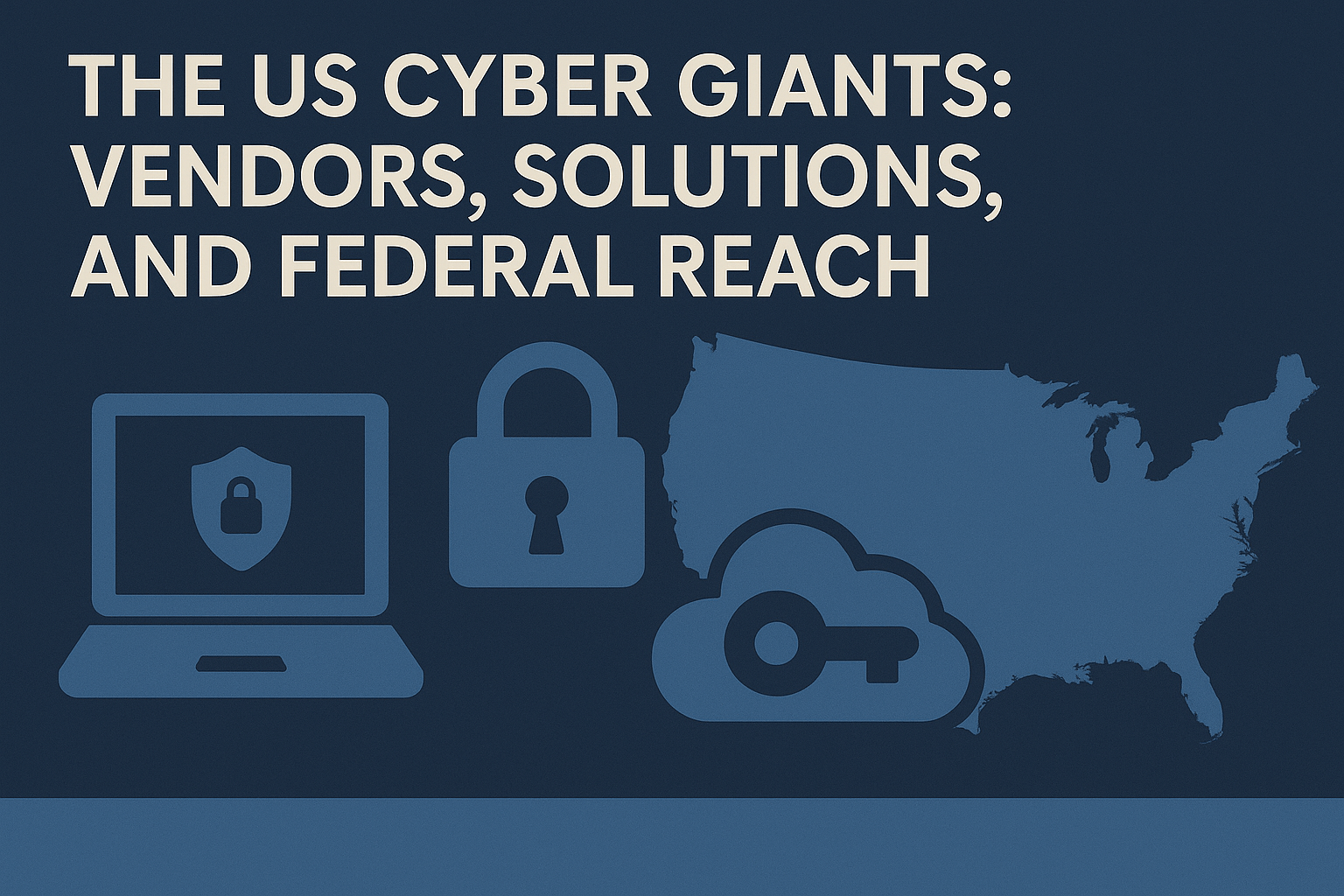The United States is home to the most powerful cybersecurity vendors on the planet. These companies don’t just sell products, they influence standards, embed themselves in national security supply chains, and shape global policy through their scale, threat intelligence, and lobbying power.
The American cybersecurity companies dominating global markets, shaping standards, and powering public sector resilience.
Whether supporting zero trust initiatives in the federal government, defending Fortune 500 networks, or providing endpoint protection for millions, these firms operate at a different tier. This article profiles the US-based cybersecurity vendors whose reach extends deep into Europe, Asia, and beyond, and whose technologies are foundational across sectors.
Content
1. Cloud Security & Threat Intelligence Titans
Microsoft Security
- Overview: With Defender, Sentinel, Entra, and Purview, Microsoft delivers a full-stack security suite baked into Azure and 365 ecosystems.
- Strengths: Integrated XDR, cloud-native SIEM, identity protection, and compliance tooling.
- Why it matters: Embedded across global enterprises, education, and public sector. Often the default platform.
Link: https://www.microsoft.com/security
Google Cloud Security (Mandiant + Chronicle)
- Overview: Fused Mandiant’s elite incident response with Chronicle’s analytics platform.
- Strengths: Threat intelligence, attack surface management, and SecOps at petabyte scale.
- Why it matters: Increasingly visible in federal and enterprise accounts post-acquisition.
Link: https://cloud.google.com/security
Palo Alto Networks
- Overview: Market leader in firewalls, cloud security, and secure access.
- Portfolio: Prisma Cloud, Cortex XDR/XSOAR, Next-Gen Firewalls.
- Why it matters: Powering Zero Trust adoption across federal and Fortune 1000 environments.
Link: https://www.paloaltonetworks.com
CrowdStrike
- Flagship Product: Falcon – lightweight, cloud-native EDR/XDR platform.
- USP: Elite threat intel and ultra-fast response.
- Why it matters: First responder for ransomware and nation-state breaches. Heavily used in finance, defence, and government.
Link: https://www.crowdstrike.com
2. Endpoint & Identity Security Leaders
Okta
- Role: Identity as a service – authentication, SSO, and access governance.
- Market: Cloud-first organisations, especially in healthcare, education, and SaaS-heavy businesses.
- Why it matters: Central to Zero Trust frameworks and remote workforce security.
Cisco (Security Division)
- Products: Duo (MFA), Umbrella (DNS filtering), SecureX (XDR platform), Talos (threat intel).
- Why it matters: Longtime enterprise vendor, now pivoting toward integrated cloud-native security.
Tanium
- USP: Real-time endpoint visibility and control across hundreds of thousands of assets.
- Use Case: Popular with federal agencies, militaries, and regulated sectors.
- Why it matters: Especially effective for hybrid infrastructure and rapid threat hunting.
3. DevSecOps, Cloud-Native, and AppSec Innovators
Zscaler
- Role: Cloud-delivered secure access – leader in SASE and Zero Trust Network Access (ZTNA).
- Why it matters: Often embedded in large enterprise and government zero trust architecture rollouts.
Datadog Security
- Focus: Cloud security posture management (CSPM), application security, and real-time analytics.
- Market: Fast-scaling tech companies, cloud-native IT estates.
- Why it matters: Popular among DevOps and engineering teams bringing security leftward.
Synack
- Model: Crowdsourced security testing (red teaming-as-a-service).
- Clients: US federal agencies, banks, defence primes.
- Why it matters: Combines AI-driven vulnerability discovery with elite human expertise.
4. Federal and National Security-Grade Vendors
FireEye (now Mandiant, part of Google Cloud)
- Specialism: Nation-state threat response, APT tracking, post-breach forensics.
- Why it matters: Credible operator with deep roots in US government and defence.
Raytheon / RTX
- Role: Government contractor in cyber warfare, military communications, and secure systems.
- Why it matters: Major cyber capability provider to the Pentagon and NATO-aligned countries.
Booz Allen Hamilton
- Focus: Cyber strategy, government services, and public-private cyber programme delivery.
- USP: Insider role in federal cyber transformation and SOC design.
5. Compliance, GRC & Risk Quantification Vendors
ServiceNow Security Operations
- Offering: Workflow-based SecOps, IR playbooks, and risk registers.
- Why it matters: Dominant player in integrated GRC and cyber incident coordination for enterprise IT teams.
BitSight
- Focus: Security ratings, third-party risk scoring.
- Why it matters: Used by insurers, CISOs, and procurement teams to benchmark vendors.
Resilience
Model: Cyber insurance + risk platform hybrid.
- Why it matters: Part of a new wave of companies fusing technical insight with financial exposure modelling.
6. Market Influence and Ecosystem Power
These US firms don’t just sell software, they influence global best practice:
- Framework Alignment: Most align their offerings with NIST SP 800 series, MITRE ATT&CK, and FedRAMP.
- Policy Impact: Many contribute to US government cybersecurity advisory councils.
- Certification/Assurance: Often set expectations for vendor onboarding in regulated industries (e.g., CMMC, FIPS, SOC 2, ISO 27001).
Final Thoughts
The US cybersecurity giants are more than vendors, they are ecosystem anchors. From cloud-first security platforms to defence contractors shaping cyber doctrine, these companies wield enormous influence across sectors and borders.
For UK and European leaders, understanding their offerings isn’t just about procurement, it’s about interoperability, policy alignment, and anticipating where global cyber norms are heading.
The future of cybersecurity is being written across Silicon Valley, Virginia, and D.C. corridors. Watch carefully, and engage wisely.
References
- Inside the UK Cyber Ecosystem: A Strategic Guide in 26 Parts
- The Insider’s Guide to Influencing Senior Tech and Cybersecurity Leaders in the UK
- The US Cyber Giants: Vendors, Solutions, and Federal Reach
- Cyber Across US Government: Agencies, Frameworks, and Innovation Pathways
- Cyber and Academia in the US: Ivy League Labs to Federal Research Programmes
